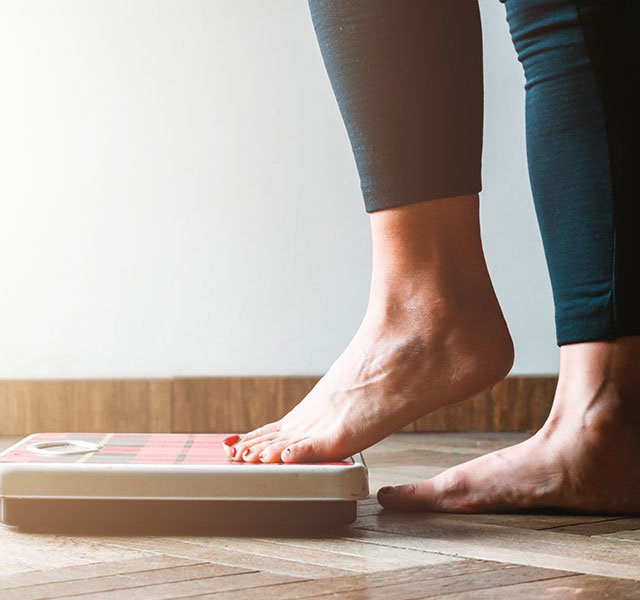Trying to determine the impact your body shape and weight have on your health and well-being isn't an exact science. Healthcare providers often use a simple calculation called body mass index, or BMI, to assess your overall health and fitness level. But this figure isn't foolproof.
BMI is a rough measurement of whether someone is over- or underweight. And while it does correlate with the risk of developing certain chronic health conditions, BMI may not be the best way to determine whether your weight increases your health risk.
What Is BMI?
In 1972, Ancel Keys, Ph.D., coined the term "body mass index" in a paper titled Indices of Relative Weight and Obesity. The idea behind BMI was to create a simple formula using weight and height ratios so medical professionals and insurers could track the health risk of Americans.
How do you figure out whether your BMI falls in a "healthy" range? Measure your weight in kilograms and divide it by your height in meters squared. Or, if you want to use pounds and inches, divide your weight in pounds by your height in inches squared; then multiply the answer by 703.
The resulting figure is a quick and easy screening tool that places you into a specific weight category:
- Underweight (BMI below 18.5)
- Healthy weight (BMI of 18.5 to 24.9)
- Overweight (BMI of 25 to 29.9)
- Obese (BMI over 30)
Rather than a one-size-fits-all weight analysis tool, BMI is just one measure to assess whether a person is at increased risk of developing certain chronic conditions.
Limits On What Your BMI Can Tell You
While your BMI can give your healthcare provider basic information about your weight status, it isn't great at predicting disease risk. In fact, people who have what is labeled a “healthy” BMI could have the same risk factors as someone in the overweight or obese range. That can create a false sense of health and wellbeing when BMI is the only tool people use. On the flip side, someone who falls into the overweight or obese category may have lower risk of developing some chronic diseases when other factors are included in the assessment.
If you have a "healthy" BMI, but smoke a pack a day, you're likely to have a higher risk of nearly every disease than a nonsmoker who is overweight. But if you eat healthy, exercise regularly and practice mindfulness strategies, you're likely to have a lower risk of premature death, regardless of your weight status.
What's more, there are significant flaws in the original BMI research:
- BMI does not distinguish between muscle mass and body fat. If you're a bodybuilder or weightlifter, chances are you're overweight based on your BMI. But that doesn't mean you're not fit and healthy.
- BMI was developed based on 7,400 men from five European countries; women were not included in the research. It does not account for racial differences as they relate to disease risk. For example, studies show that people of Asian descent have an increased risk of chronic disease at lower BMI cut-off points when compared to white Americans.
- BMI is not reliable with the elderly since they tend to have bone and muscle loss.
- BMI does not consider the distribution of fat (for example, pear-shaped versus apple-shaped).
Using BMI alone to determine health ignores other indicators of health, including mental well-being, lifestyle factors, smoking status, and environmental and sociological factors.
Better Measures Of Health
While it is true that BMI offers health professionals a quick measure of health and wellness, they can get a more complete picture of health risk by looking at multiple factors, including:
- Age
- Gender
- Medical history
- Family history
- Lifestyle factors and health behaviors
The good news: There are measures that can be used alongside BMI to quickly paint a more complete picture of your health. The easiest, and perhaps most noteworthy, is your waist-to-hip ratio.
Unlike BMI, which does not account for the body's distribution of fat, the waist-to-hip ratio can assess excess abdominal fat, a key risk factor for early death. To get your ratio, divide your waist circumference by your hip circumference. A ratio greater than 0.85 for women and 0.9 for men is considered higher risk.
Other measurements that may be used alone or in combination with BMI include:
- Skinfold thickness (measured with calipers)
- Underwater weight
- Bioelectrical impedance
- Dual-energy X-ray absorptiometry (DXA)
Unclear whether you're fit or at risk? Talk to your doctor and ask for a referral to a registered dietitian. It's better to know your risk — and learn what steps you can take to reduce it — than to measure your fitness with an incomplete figure.
Subscribe today to receive weekly emails of our latest tips.
Find out your ideal weight. Take our free Healthy Weight Quiz.
To find a doctor or registered dietitian at Henry Ford, visit henryford.com or call 1-800-436-7936.
Patricia Jurek, RD, MBA, is the manager for Henry Ford Macomb Hospital’s Center for Weight Management. Learn more about Patricia.



